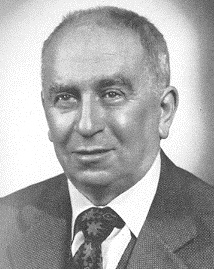Luigi Longo facts for kids
Quick facts for kids
Luigi Longo
|
|
|---|---|
 |
|
| General Secretary of the Italian Communist Party |
|
| In office 22 August 1964 – 16 March 1972 |
|
| Preceded by | Palmiro Togliatti |
| Succeeded by | Enrico Berlinguer |
| Member of the Chamber of Deputies | |
| In office 25 June 1946 – 16 October 1980 |
|
| Constituency | Milan |
| Personal details | |
| Born | 15 March 1900 Fubine, Italy |
| Died | 16 October 1980 (aged 80) Rome, Italy |
| Political party | PCI (1921–1980) PSI (before 1921) |
Luigi Longo (born March 15, 1900 – died October 16, 1980) was an Italian politician. He was also known by his nickname, Gallo. Longo was a leader of the Italian Communist Party (PCI). He served as its general secretary from 1964 to 1972. He was also the first person from another country to receive the Order of Lenin, a high award from the Soviet Union.
Contents
Early Life and Political Beginnings
Luigi Longo was born in Fubine, a town in the Piedmont region of Italy. When he was a student at a university in Turin, he joined the youth group of the Italian Socialist Party (PSI). He became very interested in politics and shared ideas based on the teachings of Karl Marx.
Longo often visited the offices of L'Ordine Nuovo, a newspaper started by Antonio Gramsci. There, he met Gramsci and Palmiro Togliatti, who would become important figures in Italian politics. In 1921, at a big meeting of the PSI, Longo helped create a new party. This happened when supporters of Vladimir Lenin's ideas left the PSI to form the Italian Communist Party (PCI). Longo quickly became a key leader in this new party, working alongside Togliatti and Gramsci.
Longo strongly opposed Fascism. When Benito Mussolini started his Fascist government in Italy in 1922, Longo moved to France. He became one of the main leaders of the PCI while living there. In the same year, he went to a meeting in Moscow and met Lenin. Longo visited Moscow many times over the years. He became an expert in political ideas and met Joseph Stalin and other leaders of the Soviet Union. In 1933, he joined an important political group within the Comintern, which was an international organization of communist parties. In 1934, he helped sign an agreement for the PCI and PSI to work together.
Fighting in Spain and the Resistance
Longo took part in the Spanish Civil War. He worked as an inspector for the Republican troops in the International Brigades. These brigades were groups of volunteers from different countries who fought against General Franco. During this time, Longo used the secret name Gallo. After General Franco won the war, Longo went back to France.

In 1940, France was invaded, and a new government was set up that worked with the invaders. Longo was arrested and held in a camp from 1939 to 1941. In 1941, he was sent back to Italy and held by the Fascist authorities.
When Mussolini's government fell in July 1943, Longo was set free. However, Mussolini soon regained control of northern Italy. Longo then took charge of the Garibaldi Brigades. These were communist groups that were part of the Italian resistance movement. This movement fought against the Fascist and German forces. Longo became a deputy commander of a large group of volunteers for freedom. He worked closely with another resistance leader, Ferruccio Parri. In April 1945, Longo was one of the main leaders of the uprising in northern Italy.
After the War
After World War II, Longo became a member of the National Congress. In 1946, he was elected to the Constituent Assembly. This group helped write Italy's new constitution. Also in 1946, a woman named Teresa Mattei chose the mimosa flower as the symbol for International Women's Day, at Longo's request.
Longo was elected many times to the Italian Chamber of Deputies, which is like a parliament. He was also a member of the PCI's leadership. In 1964, after Palmiro Togliatti passed away, Longo became the secretary of the PCI. He famously said he was "a secretary, not a boss," meaning he wanted to lead, not control. He continued Togliatti's approach, which was called the "Italian road to Socialism." This meant he tried to keep the Italian Communist Party from being too dependent on the Soviet Union.
When new youth movements started in 1968, Longo was open to their ideas. Among the PCI leaders, he was one of the most willing to talk with these new activists, even if he didn't agree with everything they did.
In late 1968, Longo had a stroke. He got better over the next few months, but from February 1969, Enrico Berlinguer helped him with most decisions as vice-secretary. In 1972, Longo stepped down as party secretary. He supported Berlinguer to take his place. From 1972 until his death eight years later in Rome, he was the honorary president of the PCI. In this role, he disagreed with some of the party's later decisions.
Longo was also a writer. He started Vie Nuove, a popular magazine for the Communist Party.
Images for kids
| Party political offices
|
||
|---|---|---|
| Preceded by Palmiro Togliatti |
Secretary of the Italian Communist Party 1964–1972 |
Succeeded by Enrico Berlinguer |
See also
 In Spanish: Luigi Longo para niños
In Spanish: Luigi Longo para niños



